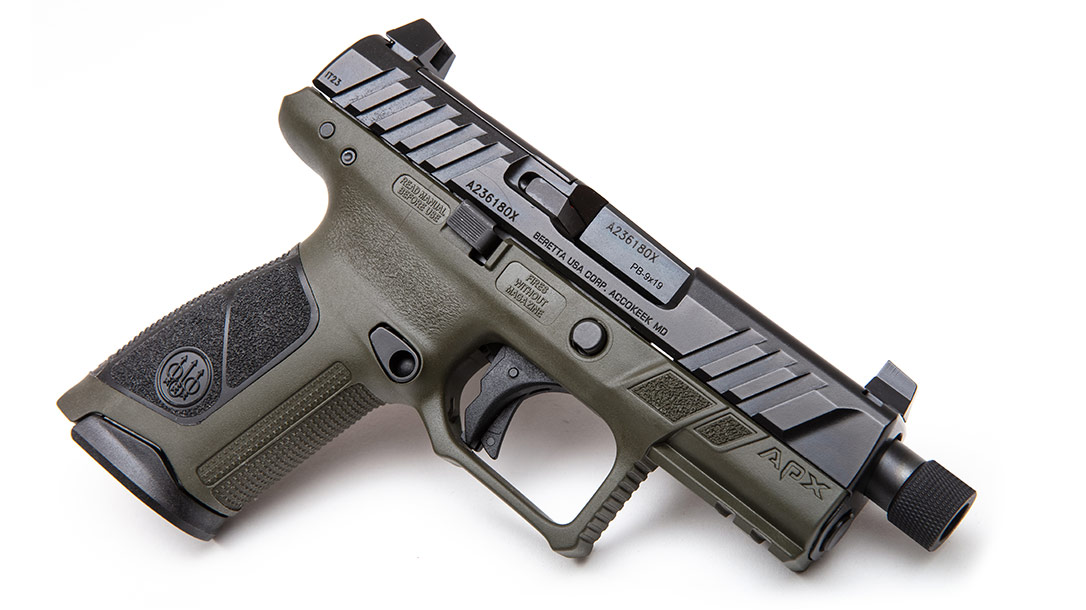Over the last few decades, Beretta’s hallmarks have been quality and style. However, a more recent accomplishment by the company has been maximizing the performance-to-dollar ratio with its new line of striker-fired pistols. The most recent example of this from Beretta is the APX A1 Compact Tactical.
The Budget-Friendly Beretta APX A1 Compact Tactical
I wouldn’t say past models from the company weren’t a good value. However, the new APX A1 lineup showcases a relatively low price point in comparison. And it does it without compromising any key attributes like reliability, ergonomics, or accuracy.
The new APX A1 Compact Tactical is a prime example of the company’s efforts to adapt to the times. Specifically by making its products more accessible to a larger audience.
Advertisement — Continue Reading Below
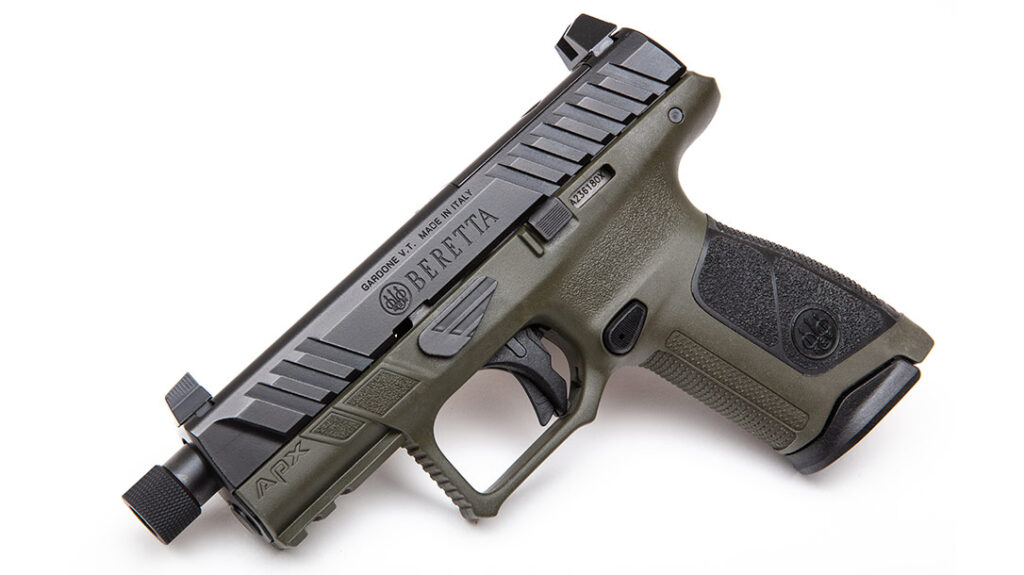
The APX A1 series of pistols is the second generation of the polymer-framed and striker-fired APX family. And it offers just about everything you could want in a modern fighting pistol.
Key features include a Picatinny rail for accessories, aggressive front and rear slide serrations for easy manipulation, and an ambidextrous slide stop. Likewise, a reversible magazine release and interchangeable backstraps tailor the fit of the grip to the user.
Advertisement — Continue Reading Below
Additionally, each APX A1 pistol comes from the factory with the slide milled to accept a variety of adapter plates. As a result, you can mount your optic of choice. Currently, there are adapter plates for footprints from Trijicon, Leupold, C-More, Aimpoint, Burris, and Docter.
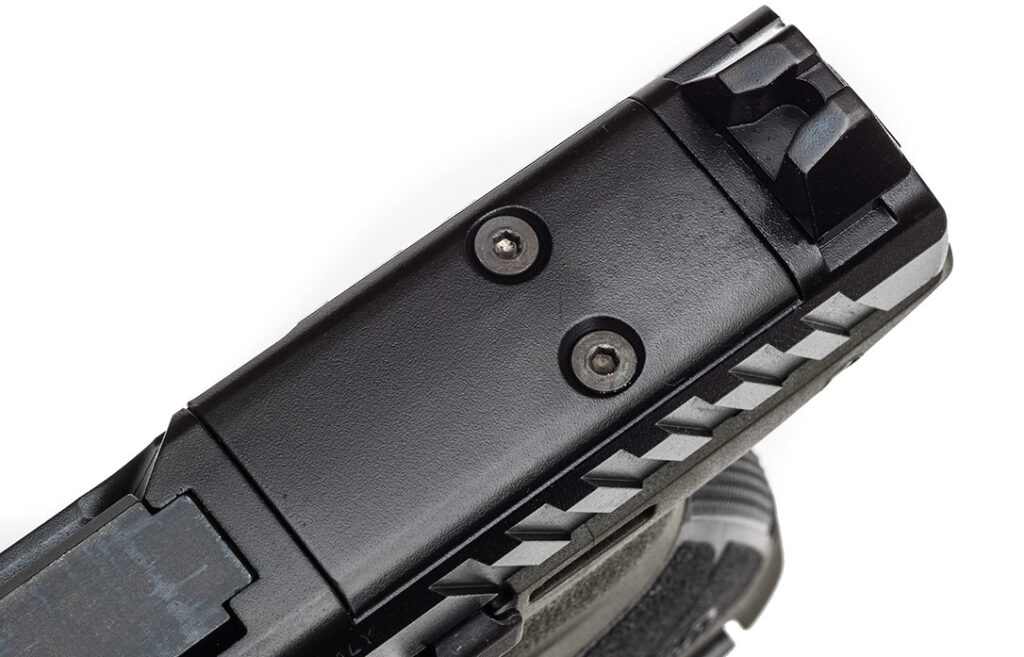
Going Compact
This brings us to the APX A1 Compact Tactical model. The pistol offers a couple of additional enhancements aside from its Olive Drab frame. Like the Full-Size Tactical model, released in early 2023, the Compact Tactical includes a threaded barrel (1/2 x 28). This allows the use of a comp or can, and it comes with a set of suppressor-height sights.
Advertisement — Continue Reading Below
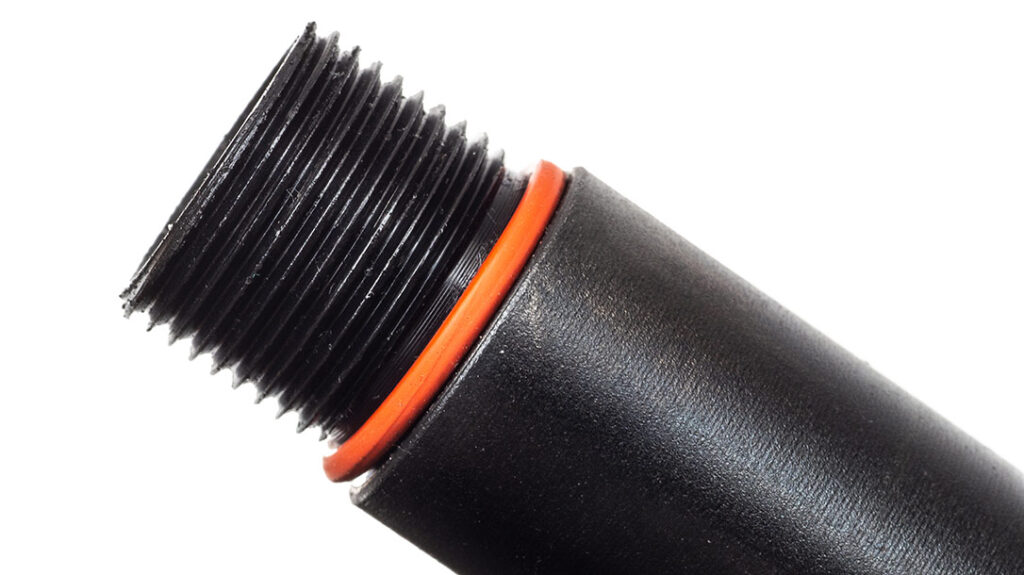
Both the front and rear sight are blacked out and serrated to mitigate glare. This helps to not distract the shooter when using a red dot for their primary sight package. Another bonus that comes with the APX A1 Compact Tactical is the three 15-round magazines that ship with each pistol.
Perhaps one of the most impressive things about the APX A1 Compact Tactical is the price. Even with all the features mentioned and Beretta’s legacy of ultra-reliable and accurate firearms, the MSRP is just $549. I’m not sure how a top-tier company like Beretta accomplished that feat. However, that price is substantially less than standard striker-fired pistols from other major manufacturers.
Advertisement — Continue Reading Below
Of course, that alluring price point doesn’t mean all that much if the performance isn’t on point. So, we took the APX A1 Compact Tactical for a test drive at the range to see if it lived up to the Beretta name.
First Impression
As mentioned earlier, the APX A1 Compact Tactical is a second-generation pistol that includes a few changes from the original APX lineup. The first improvement is a slide that is easier to rack due to the use of a single-coil recoil spring.
Another upgrade is the improvement to both the operation and feel of the trigger system. This includes a flat trigger safety that sits flush with the trigger shoe when it is depressed.
Advertisement — Continue Reading Below
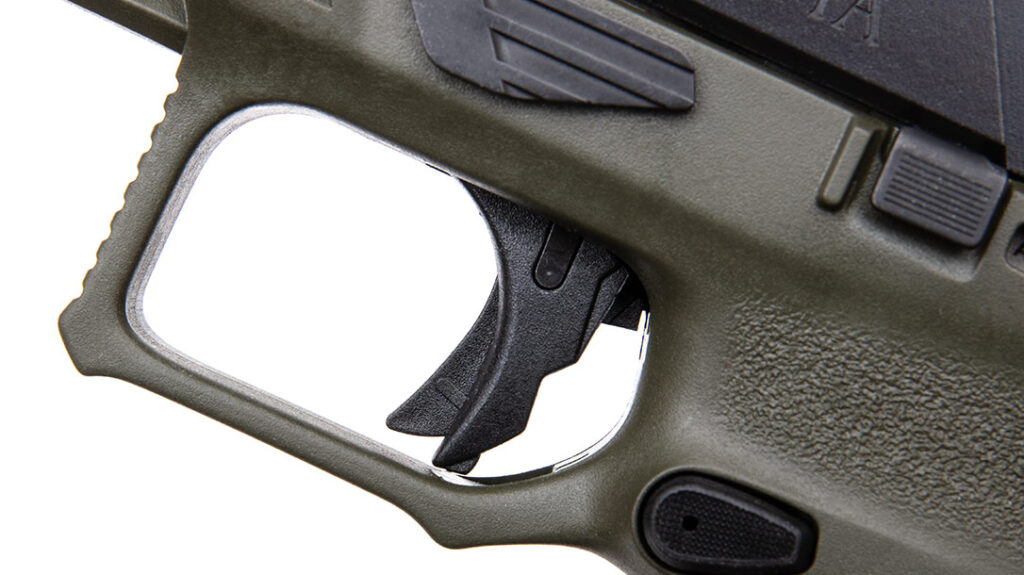
There were other changes made to the A1 lineup that you may or may not believe to be improvements. One is more of a cosmetic change. Specifically, the move to more standard slide serrations compared to the original APX’s radical looking indentations and spiny ridges.
The other change is the removal of the finger grooves from the grip of the A1 line. Honestly, I’m okay with or without finger grooves. However, I know a lot of folks have very rigid opinions either way. So, it’s up to you to decide whether the change was an improvement or not.
Advertisement — Continue Reading Below
The APX A1 Compact Tactical in Hand
One thing that’s pretty undeniable is that the APX A1 Compact Tactical is very comfortable in the hand. Especially if you select the correct size backstrap for a better fit. The ergonomics were another thing the folks at Beretta focused on for the improvements for the A1 line.
There’s plenty of texturing to lock in the hand without being too aggressive. Likewise, the undercuts behind the trigger guard and under the rear of the slide provide a higher purchase on the pistol. As a result, this provides better ergonomics and helps reduce muzzle flip.
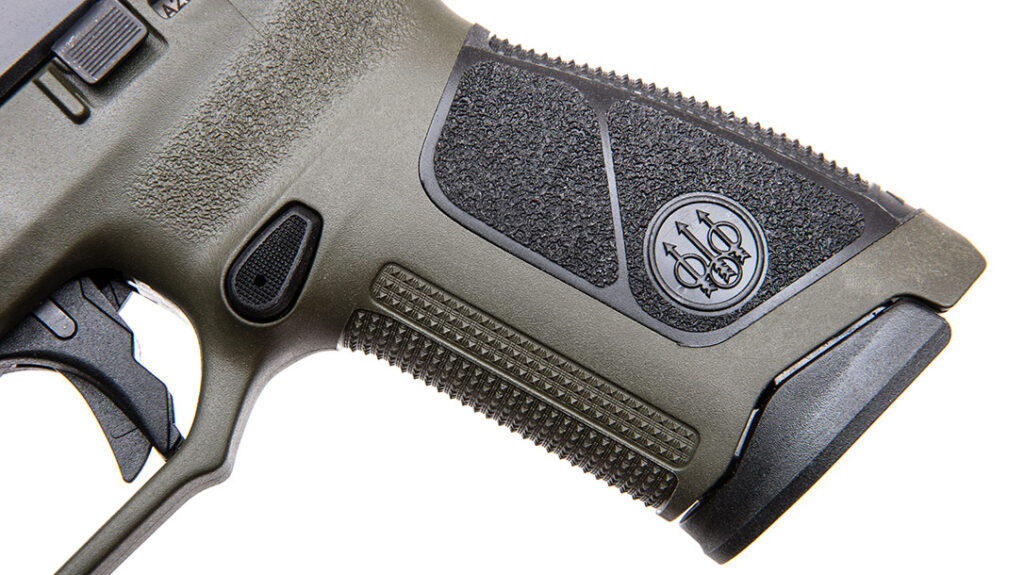
Advertisement — Continue Reading Below
The only thing I didn’t like about the APX A1 Compact Tactical was the disassembly process. It wasn’t too complicated, but it wasn’t the simplest process either.
After locking the slide back, you need to have some sort of hard tool to press in on the disassembly lever from the right side. While pressing in with one hand, use the other hand to flip the lever down on the left side.
The lever is under spring tension. So, you have to keep holding the lever down while dropping the tool in your right hand. Then, shift over to engage the slide release and then pull the trigger. It’s something you’ll get used to, but the first couple of times through the process feels a bit awkward.
Advertisement — Continue Reading Below
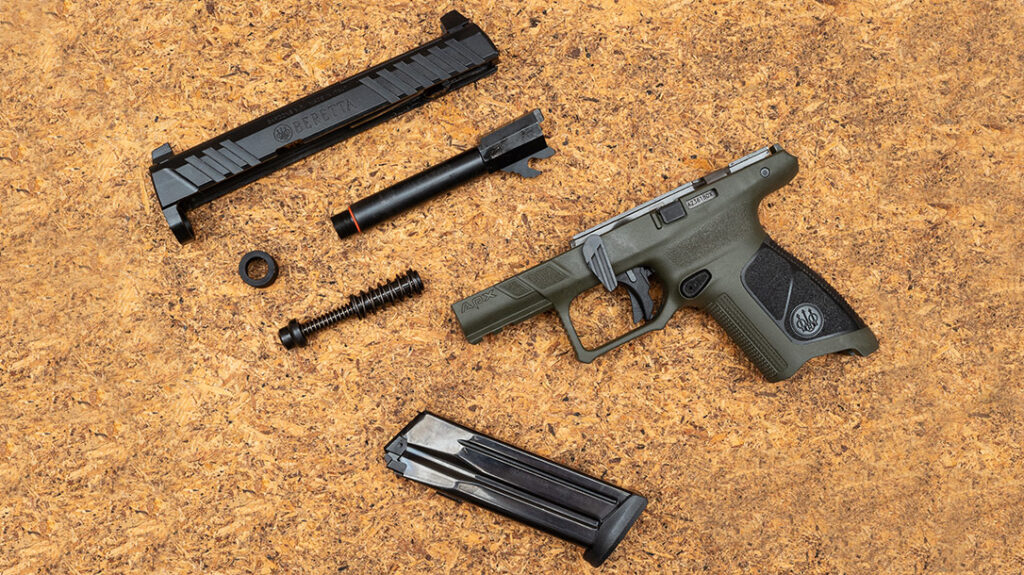
Shots Fired
When we actually settled into shooting the APX A1 Compact Tactical, I had some mixed feelings about the trigger. Beretta touts the trigger as being “Best in Class,” but I’m not sure what metric they are using. I liked that the trigger had a very clean take-up and a fairly crisp and authoritative break. However, the break weight was a little heavy.
Using a Wheeler Engineering gauge, I got an average break weight of 6 pounds and 2 ounces. To be honest, it makes sense when you consider the APX A1 family is intended for service and duty use. The heavier trigger break will help prevent accidental discharges. Although I personally would like a striker-fired trigger to be a bit lighter than that.
That said, it didn’t take long to get used to the trigger on the APX A1 Compact Tactical. And it certainly didn’t interfere with our accuracy results when testing from the bench at 15 yards. I fired multiple five-shot groups of each premium load I tried and made sure to include a variety of weights to see if the pistol had a preference or not.
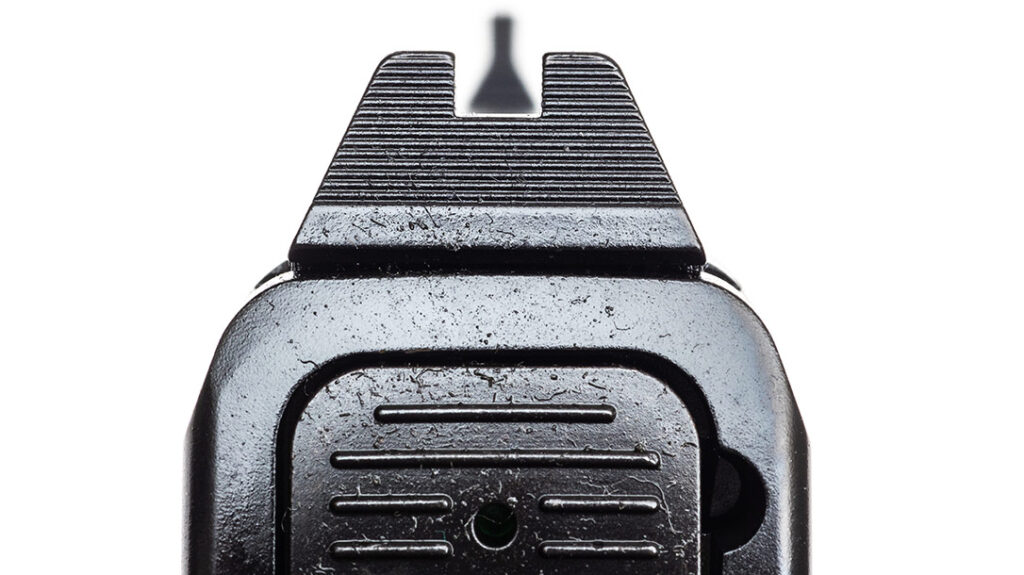
I don’t know about you, but it’s tough for me to test accuracy with iron sights. Mostly since it’s hard to make sure I’m aligning the sights on the same spot every time—especially with my aging eyes. You can only be so precise with iron sights. Particularly sights built for duty or self-defense and not actual target sights.
A red-dot sight provides a much more precise aiming point, but I wasn’t able to do that during this test for various reasons. Even so, the results from the APX A1 Compact Tactical were still quite excellent.
Impressive Performance of the APX A1 Compact Tactical
With three five-shot groups fired with each load, the average group size of six different ammo brands and types was just 1.43 inches. The Remington 147-grain Golden Saber Bonded load had the single best five-shot group of .88 inches. Likewise, Hornady’s 135-grain +P Critical Duty load was slightly more consistent and had the best three-group average of 1.27 inches.
Not far behind was Federal’s 135-grain Hydra-Shok Deep load with a three-group average of 1.36 inches. This worked well for me since I like the mid-weight loads because they still provide good velocity while carrying an extra bit of mass for better penetration.
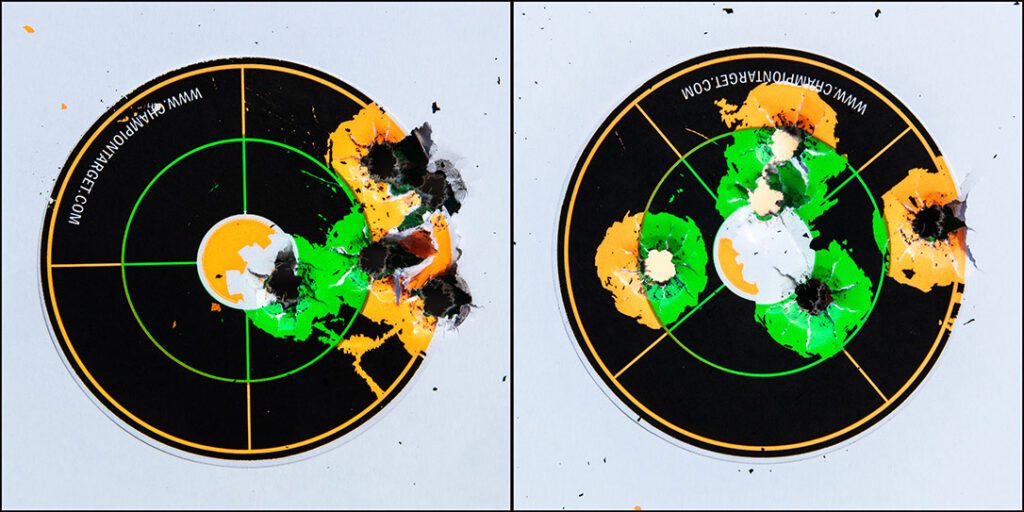
As expected, the APX A1 Compact Tactical was dead-nuts reliable with everything we shot through it. Aside from the premium loads in the accompanying accuracy table (below), we also shot Federal’s 147-grain Syntech Training Match load and its 124-grain Syntech Range ammo.
On top of that, we threw in some 115-grain Sig Sauer Elite Ball ammo and a few boxes of Remington’s 124-grain Range load. Despite the wide assortment of loads that were tried, the Compact Tactical chewed through it all without a single hiccup.
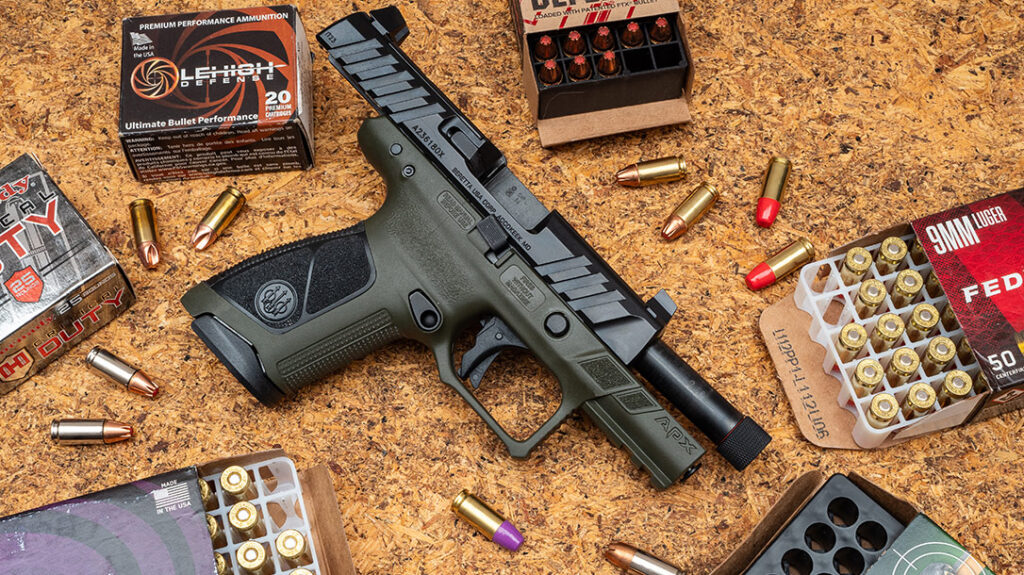
As far as the actual shooting experience goes, the results in that area were fantastic as well. The Compact Tactical had a very soft and imminently controllable recoil response even when +P loads were fired. At times, with some loads, it even felt like we were shooting a large-framed .380 pistol instead of a 9mm.
The grip ergos went a long way in facilitating that easy shooting experience. Correspondingly, the ample grip texturing did a superb job of locking in the strong hand for solid recoil control.
Final Thoughts
I recently had the opportunity to shoot the excellent APX A1 Full Size Tactical. To be honest, I wasn’t sure how I would like the tactical configuration on the smaller version at first.
When I think of a tactical pistol, in my mind, that means a larger platform with prodigious capacity and a larger form factor to host every accessory I can hang on it. However, my thinking soon changed.
The more I shot and engaged with the Compact Tactical, the more I liked it. It offers the same superb features but just in a smaller package that’s easier to carry and, at times, conceal.
On top of all of the requisite features and stellar performance, the APX A1 Compact Tactical is quite the bargain as well. While it has an MSRP of $549, I’ve seen it in shops for under $500. Even better, Beretta is currently offering a $100 rebate on its APX A1 pistols through the end of March 2024. Thus allowing the buyer to get into one for just under $400.
For rebate details, please visit Rapid-Rebates.com/apxa1fullsize.
When you consider the extra features like the threaded barrel, suppressor-height sights, and the extra third magazine, that makes the Compact Tactical model a hell of a steal for the money.
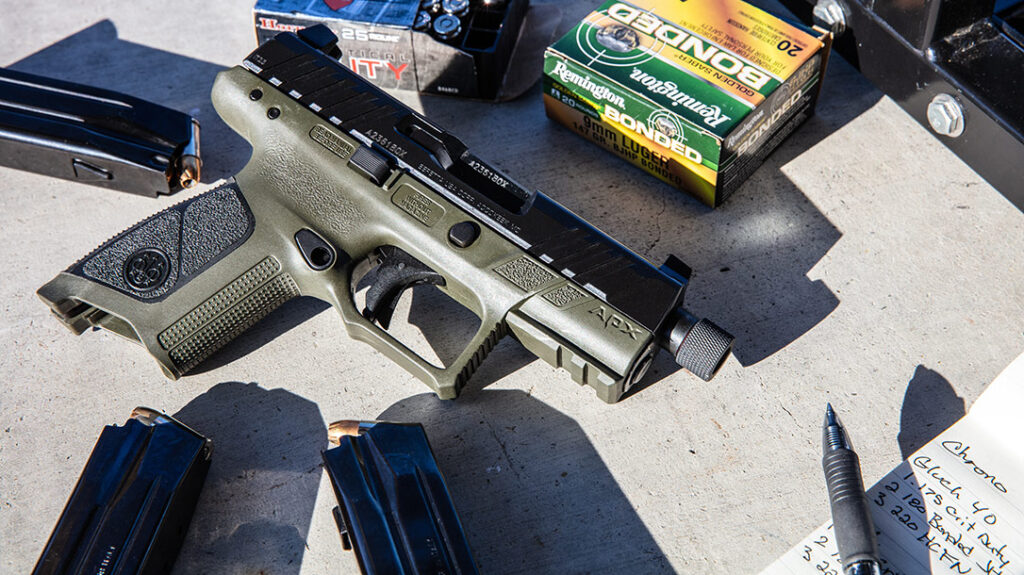
How Beretta did this without cutting any corners stupefies me. But if you’re looking for an enhanced striker-fired pistol that delivers top-shelf performance for the dollar, I’d jump on the APX A1 Compact Tactical as quickly as you can.
For more information, please visit Beretta.com.
Beretta APX A1 Compact Tactical Specs
| Caliber | 9mm |
| Barrel | 4.2 inches |
| Overall Length | 7.75 inches |
| Height | 5.2 inches |
| Width | 1.3 inches |
| Weight | 27.7 ounces |
| Grips | Polymer |
| Sights | Blacked Out, Suppressor-Height |
| Action | Striker-Fired |
| Finish | Nitride |
| Capacity | 15+1 |
| MSRP | $549 |
Performance
| Accuracy | |||
| Velocity | Average | Best | |
| Federal 135gr. Hydra-Shok Deep | 1066 | 1.36 | 1.09 |
| Hornady 115gr. Critical Defense | 1119 | 1.59 | 1.23 |
| Hornady 135gr. +P Critical Duty | 1081 | 1.27 | .95 |
| Lehigh Defense 90gr. XD | 1269 | 1.42 | 1.14 |
| Sig Sauer 147gr. Elite V-Crown | 977 | 1.58 | 1.27 |
| Remington 147gr. Golden Saber Bonded | 998 | 1.38 | .88 |
Bullet weight measured in grains, velocity in feet per second 15 feet from the muzzle by a Competition Electronics ProChrono Digital Chronograph, and accuracy in inches for three, five-shot groups at 15 yards.
